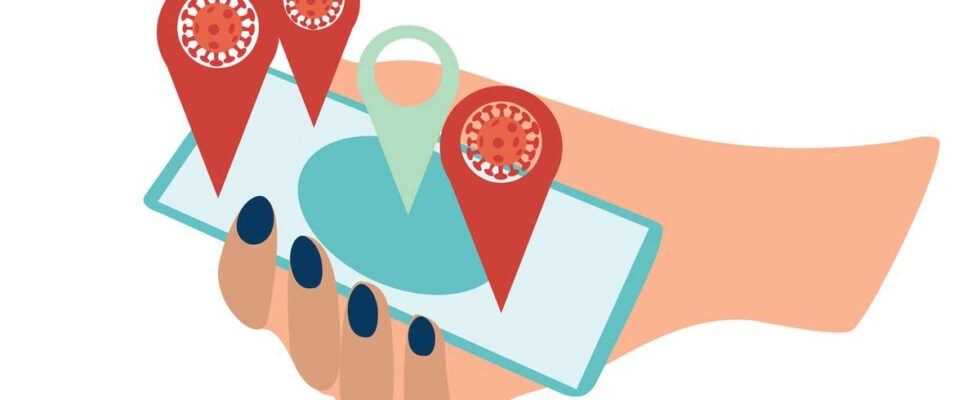Can the corona pandemic be dealt with using an app? The so-called tracing app has repeatedly appeared in government reports over the past few months on how the corona crisis can be solved. In other countries, the technical component was not long in coming, in Germany the development took significantly longer – not least due to data protection concerns.
Now the time has come: The so-called "Corona warning app" is due to be released in mid-June. The programmers commissioned by the federal government announced this in a first preview. But how does the system work? And how can an app help in the corona pandemic? We answer the most important questions about the Corona warning app.
How does the Corona warning app work?
The app is intended to track contacts of infected people. To do this, you can download the app on your smartphone and receive the first instructions.
If the app is activated, the cell phone does the work itself: it registers other smartphones via Bluetooth, measures the distances and saves those that come too close. In a close encounter, anonymous ID keys are automatically exchanged.
If a person is now tested positive for the corona virus, they can enter the findings in the app. All IDs are then compared – and registered contacts are notified in their app.
How can the app help to get the corona pandemic under control?
As a result, the infection chains should not only be traced, but also broken. Because the faster someone learns that they have had contact with an infected person, the sooner they can quarantine themselves. This way, further infections can be avoided until there is a negative test result.
A prerequisite for the success of the Corona warning app is that as many people as possible have installed it. Health Minister Jens Spahn emphasized that acceptance for voluntary registration is important – which is why the data protection question first had to be clarified.
What about data protection? What does decentralized storage mean?
There were concerns about the new Corona warning app, in particular from the side of data protection. What happens to people's contacts and movement profiles? Where are they stored? In order to take away these concerns from the citizens, the federal government ultimately decided to change its strategy at the end of April: The app data should no longer be compared centrally on the servers, but only decentrally.
This means that as a user you only release your ID, which changes regularly and should not be used to identify the person, to the server. Which IDs are in contact with each other should then only be visible on your own smartphone. This means that only the users themselves have access to the contact network and no one else. The contacts therefore remain anonymous and are only compared using IDs.
sources used: Tagesschau, Chip, Federal Government
